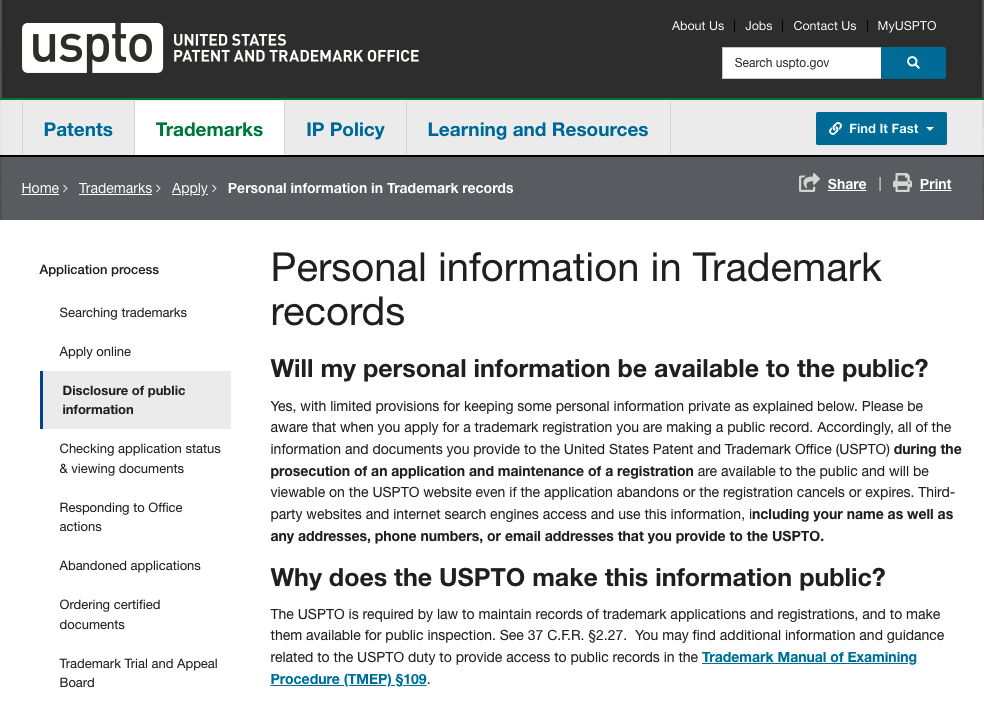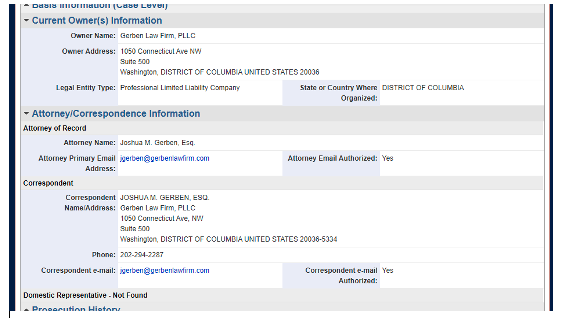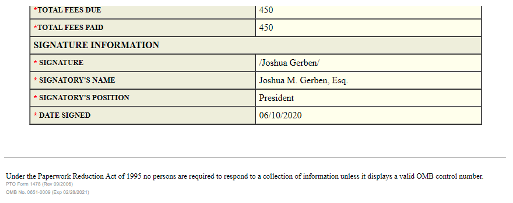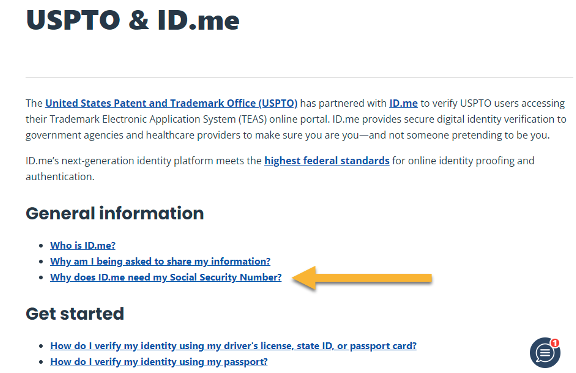How to Protect Your Privacy at the USPTO When Filing a Trademark Application

When you file a trademark application, you put a lot of information on the public record and, once filed, it is nearly impossible to remove. The United States Patent and Trademark Office is a public filing system, meaning that there is no expectation that any of the information you provide will be private.
This data is available through bulk downloads daily, exposing applicants to scams and other unwanted solicitations. In early 2022, the USPTO will go one step further and require “identity verification” for applicants filing without an attorney that will require the submission of documents like photo identification and social security numbers.

If you are concerned about privacy, you should talk to an experienced trademark attorney about ways to protect yourself while registering a trademark.
About the USPTO’s New Identification Verification System
Soon, the USPTO will require identification verification through a U.S. government vendor called ID.ME. ID.ME verifies user identities through a mixture of government documents (passport, driver’s license, other ID), social security number, and a photo.
If an applicant is uncomfortable with providing this information, then they should consider using a licensed U.S. attorney, who must verify themselves and their staff before they are able to submit documents to the USPTO. This way, the applicant themselves would not need to go through this in-depth verification process and can have their attorneys take on the burden of a data breach or other privacy issues if they ever should arise.
The Types of Public Information Found in a USPTO Application
There is a variety of information easily available at the USPTO’s website and databases. Some of this information can be downloaded in bulk from the USPTO and is regularly hosted by third-party websites, such as Justia or Trademarkia.
1. Mailing Address
An applicant’s mailing address is public information and is visible in all basic views of the USPTO’s database. To view this information, interested parties can use the Basic USPTO Search found at tmsearch.uspto.gov. The basic USPTO search will show the mailing address (but very little other information).

However, by clicking on the TSDR link (the “Trademark System for Document Retrieval”) interested parties can get much more information.

In 2019, the USPTO started requiring foreign applicants to use U.S. counsel to file applications. To verify the applicant’s location, the USPTO began requiring “domicile” addresses and mailing addresses. The USPTO does not accept PO Boxes, mail forwarding services, or UPS stores as “domicile” addresses.
The USPTO will shield the applicant’s domicile address from public view. The mailing address, however, is public.
From the moment an applicant files their application, and the application appears in the USPTO’s database, applicants will begin receiving scam mailings from third parties attempting to deceive applicants into paying them money. Often, these mailings look like they are being sent from the USPTO seeking additional fees.
Gerben Perrott regularly reminds our clients that the USPTO will never send them “snail mail” correspondence regarding their trademark application, as all correspondence will come through our office. We also encourage clients to send us any mail they receive regarding their trademark for us to review to ensure that a scam letter is not confused for a legitimate “cease and desist” letter or other third-party correspondence.
Partnering with an attorney can help mitigate the harm in the necessary inclusion of a mailing address with the USPTO.
2. Signatory
Every trademark application must include a signed statement by someone with knowledge of the trademark who is an authorized officer of the company. Most of the time, this is the company’s owner or another officer.
There are very few cases in which an attorney should sign an application on behalf of a client. Unless that attorney has a detailed knowledge of the business and its use (or planned use) of the trademark, it should be the applicant, not the attorney, signing the sworn statement. Further, by signing a sworn statement to the USPTO, the attorney could be deposed based on their alleged knowledge of the application, leading to many issues.
This information is not visible in basic views of the USPTO’s databases. However, it is visible through the TSDR documents list.

Currently, there is no way to shield the signatory. It is important to be aware that, although it is not easy to access (and third parties cannot easily bulk download it) it is visible to the public and always will be.
3. Email Address
Starting in 2019, the USPTO began phasing out its practice of sending physical mail to applicants. The USPTO now requires an email address for the applicant, even if that applicant is represented by an attorney.
Currently, applicant email addresses are shielded from public view if the applicant is represented by an attorney. If not, the applicant’s email address will be visible in the basic TSDR database view under correspondence.
If an applicant is uncomfortable with their email address being public, one solution would be to hire an attorney as their correspondent. This way, all emails, and mail would come through the attorney’s office, and they would include their names, emails, and phone numbers in the USPTO’s database instead of the applicant.
4. Proof of Use Specimens
Most applicants will need to submit examples of how they are using a trademark to the USPTO before a trademark application will register. These should be pictures available to the public anyways, but occasionally an applicant will include items that were not meant to be public, such as invoices or confidential documents. If this happens, there is no way to ensure that they are removed from the USPTO’s database. The applicant must submit a Petition to the Director of the USPTO detailing extraordinary circumstances to get any information removed, and there is a good chance a third-party website will download it before then.
In a recent example, an applicant applied for an application for a blog but included a proposal for social media consulting and advertising in the specimen. It provided pricing and other information that the applicant likely did not mean to be public. This information is now public for competitors and other potential customers to review.
An experienced attorney will counsel clients on what should (and shouldn’t) be submitted to the USPTO in a public database.
Protecting Your Personal Information
Trademark applications and registrations are, by their very nature, public documents. One of the benefits of a US trademark registration is nationwide “notice,” meaning that no one can use the fact they didn’t “know” you had a trademark as a defense to infringement. Therefore, trademark filings are public and easily accessible to businesses and individuals, with access through the USPTO website and a variety of third-party websites using USPTO data.
While some information must always be public, working with an experienced attorney can help applicants reduce their exposure and protect their private information.
Do you need assistance with a trademark matter?
Contact an Attorney Today
